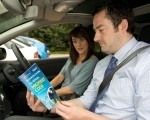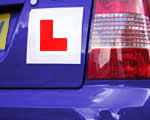 Go to main content
Go to main content
Archive Website of the UK government
Please note that this website has a UK government accesskeys system.
Main menu
Page menu
Motoring

Planning and recording how you learn to drive

Research shows that learners who have a combination of professional instruction and private practice do better at the driving test. On average, those who pass have had 47 hours of professional instruction and 20 hours of private practice. Find out how to use a driver's record to plan your learning.
The driver's record
The driver's record is a way of helping both you and your driving instructor to:
- identify areas where you need to develop your skills and understanding
- keep a record of your progress while you learn to drive
It has:
- a list of 24 key skills covered in the practical driving test
- space for your instructor to fill in as you progress through the five levels shown on the record
You need to:
- learn the skill and then practise to get the experience
- learn and develop the theory and practical driving at the same time
What are the five levels?
The meaning of each level is:
- level one - the skill is introduced
- level two - it can be carried out under full instruction
- level three - it can be carried out correctly when prompted
- level four - it rarely needs to be prompted
- level five - you can carry it out all the time without any prompting
Levels one to four should be initialled and dated by your instructor, and full details added when you reach level five.
The driver's record will help to remind you what you are trying to achieve, how to get there and how far you have got.
Practising your driving skills
It's important to practise what you have learned during your lessons. Get together with your instructor and the person who will be helping you to practise and discuss what you need to do.
Try to practise:
- on as many types of road as you can
- in all sorts of traffic and weather conditions, even in the dark
- on dual carriageways where the national speed limit applies - you may be asked to drive on this type of road during your test
Keep a record of any practice you do on different types of road and during different conditions between lessons. This will help you to remember how much practice you have had in the different conditions.
You should also record any worries you may have about your driving and then discuss these with your instructor.
When to take your practical test
You aren't ready to take your test until you have a complete set of signatures in the level five boxes. By this time you should be able to drive safely without prompting from your instructor or the person helping you to practise.
Take someone with you on your car driving test
The Driving Standards Agency encourages you to take someone with you on your driving test. They:
- will usually be the person who has taught you to drive
- could be a relative or friend
- must be over 16 years old
- cannot take any part in the test
- will be able to see how you perform during the test
To get the most benefit, ask your instructor to go with you. They can then give you advice on how to improve your driving, whether you pass or fail.
If you’d like to take someone with you, make sure that you talk to them about it when you are preparing for your test.
More useful links
Additional links
Simpler, Clearer, Faster

From 17 October, GOV.UK will be the best place to find government services and information


